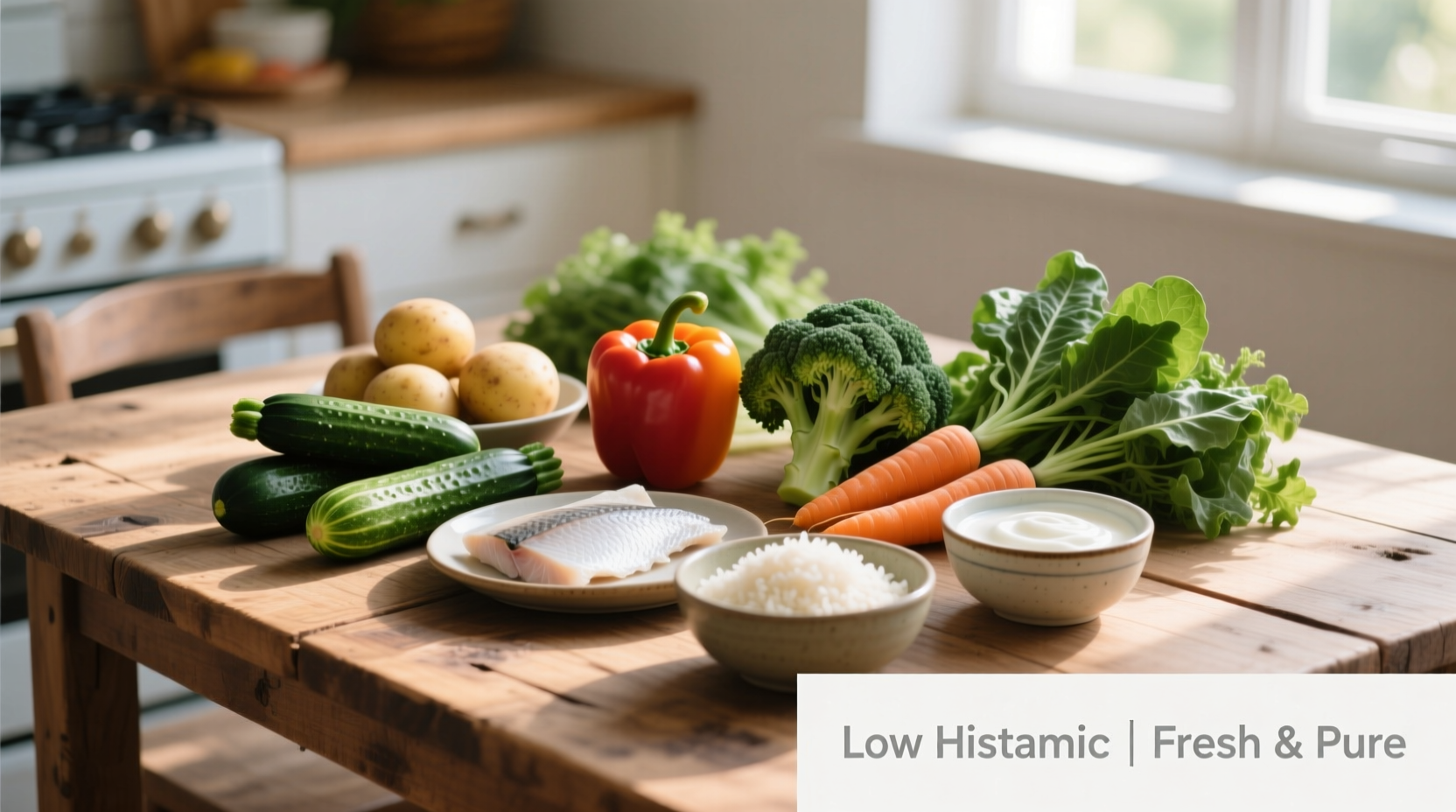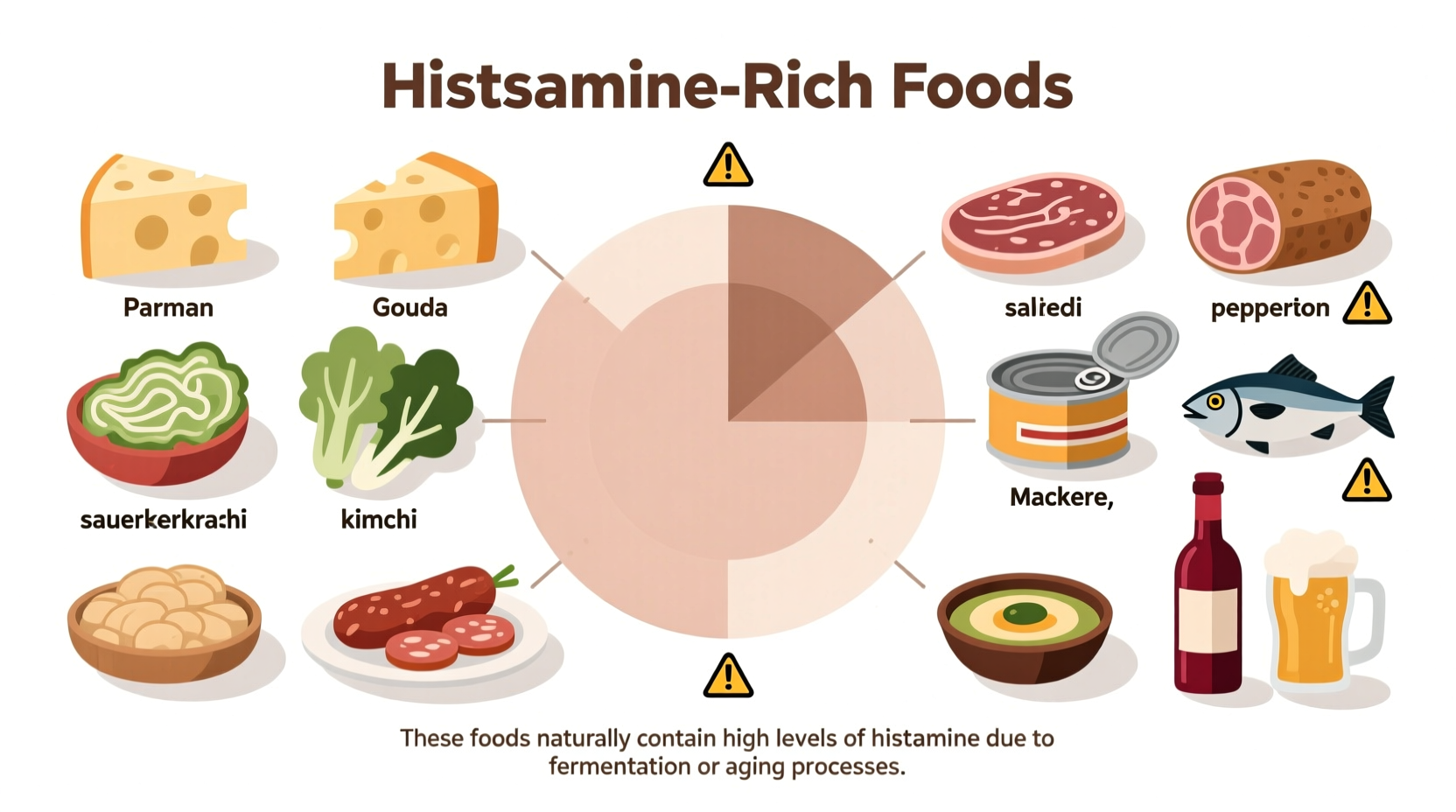Based on current scientific research, the highest histamine foods include fermented products (like aged cheeses, sauerkraut, and soy sauce), cured meats (salami, pepperoni), certain fish (mackerel, tuna, sardines), and alcoholic beverages (red wine, beer). Fresh foods generally contain minimal histamine, while processing, aging, and fermentation significantly increase histamine levels.
If you're managing histamine intolerance or related health concerns, knowing exactly which foods contain high histamine levels is crucial for symptom control. This comprehensive guide provides evidence-based information about histamine-rich foods, explains why certain items trigger reactions, and offers practical dietary strategies backed by nutritional science.
Understanding Histamine in Foods: Why It Matters
Histamine is a biogenic amine naturally present in many foods, particularly those that have undergone fermentation, aging, or extended storage. For individuals with histamine intolerance—a condition where the body struggles to break down histamine effectively—consuming high-histamine foods can trigger symptoms ranging from headaches and digestive issues to skin rashes and nasal congestion.
According to research published in the Journal of Nutritional Science and Vitaminology, histamine intolerance affects approximately 1-3% of the population, with women being more commonly affected than men. Understanding which foods contain significant histamine levels helps you make informed dietary choices that support your wellbeing.
Complete List of High Histamine Foods by Category
Not all high-histamine foods contain equal amounts. The following table categorizes foods by their typical histamine content based on data from the National Institutes of Health and European Food Safety Authority studies:
| Food Category | High Histamine Foods | Typical Histamine Level (mg/kg) |
|---|---|---|
| Fermented Dairy | Aged cheeses (cheddar, gouda, parmesan), yogurt, kefir | 50-2,000 |
| Cured Meats | Salami, pepperoni, ham, bacon | 100-5,000 |
| Fish & Seafood | Mackerel, tuna, sardines, herring, anchovies | 200-2,000 |
| Fermented Vegetables | Sauerkraut, kimchi, pickles | 50-1,500 |
| Alcoholic Beverages | Red wine, beer, champagne | 5-2,500 |
| Fermented Soy Products | Soy sauce, miso, tempeh | 50-1,000 |
It's important to note that histamine levels can vary significantly based on preparation methods, storage conditions, and individual product differences. For example, fresh fish contains minimal histamine, but levels increase dramatically during improper storage or when fish begins to spoil.
How Histamine Develops in Foods Over Time
Histamine forms naturally through bacterial fermentation processes. The timeline below shows how histamine levels increase in common foods:
- Freshly caught fish: Contains minimal histamine (0-5 mg/kg)
- After 24 hours at room temperature: Histamine levels can reach 50-100 mg/kg
- After 48 hours: Levels may exceed 200 mg/kg, potentially causing symptoms
- Aged cheeses: Histamine increases during aging—from undetectable in fresh cheese to 50-2,000 mg/kg in aged varieties
- Red wine: Contains 5-2,500 mg/kg depending on fermentation process and aging
This evolutionary process explains why food freshness and proper storage are critical factors for those managing histamine sensitivity. The National Library of Medicine notes that temperature abuse during food transportation significantly accelerates histamine formation in susceptible foods.
Practical Dietary Guidance for Histamine Management
Managing histamine intake requires more than just avoiding high-histamine foods. Consider these evidence-based strategies:
Smart Shopping and Storage Techniques
Purchase the freshest possible foods and consume them quickly. For fish, choose frozen options that have been flash-frozen immediately after catch, as this preserves freshness and minimizes histamine development. Store foods at proper temperatures—below 40°F (4°C)—to slow histamine formation.
Food Preparation Considerations
Cooking doesn't eliminate histamine, but certain preparation methods can help. When preparing meat, remove visible fat (where histamine concentrates) before cooking. For vegetables, consume them fresh rather than fermented. If you enjoy fermented foods, introduce small amounts gradually to assess your tolerance.
Individual Tolerance Variations
It's crucial to recognize that histamine tolerance varies significantly between individuals. While some people react strongly to even moderate histamine levels, others may tolerate certain high-histamine foods in small quantities. The European Academy of Allergy and Clinical Immunology emphasizes that personalized dietary approaches work best for managing histamine-related symptoms.

When High Histamine Foods Might Be Tolerable
Context matters significantly when managing histamine intake. Certain high-histamine foods may be tolerable under specific conditions:
- Portion size: Small amounts of aged cheese may be acceptable when spread throughout the day
- Food combinations: Consuming histamine-rich foods with DAO enzyme cofactors (like vitamin B6, copper, and vitamin C) may improve tolerance
- Timing: Some individuals tolerate histamine better at certain times of day
- Overall dietary pattern: A balanced diet supporting gut health may improve histamine metabolism over time
Research from the University of Vienna suggests that individual responses to histamine-containing foods depend on multiple factors including gut microbiome composition, genetic variations in DAO enzyme production, and overall dietary patterns. This explains why standardized elimination diets don't work equally well for everyone.
Building a Sustainable Low Histamine Approach
Rather than implementing extreme restrictions, focus on creating a balanced approach:
- Start with a temporary elimination phase (2-4 weeks) of the highest histamine foods
- Systematically reintroduce foods while tracking symptoms
- Identify your personal tolerance thresholds
- Focus on fresh, minimally processed alternatives
- Consider working with a registered dietitian specializing in food sensitivities
Remember that histamine isn't inherently bad—your body produces it naturally for important physiological functions. The goal is finding your personal balance point where you can enjoy a varied diet without triggering uncomfortable symptoms.











 浙公网安备
33010002000092号
浙公网安备
33010002000092号 浙B2-20120091-4
浙B2-20120091-4